From Foster + Partners, this tent-like structure is made from wood and built around three symbolic crosses. This British design and engineering firm is known for it’s sustainable approach, as shown with this structure.
Image courtesy of: Dezeen
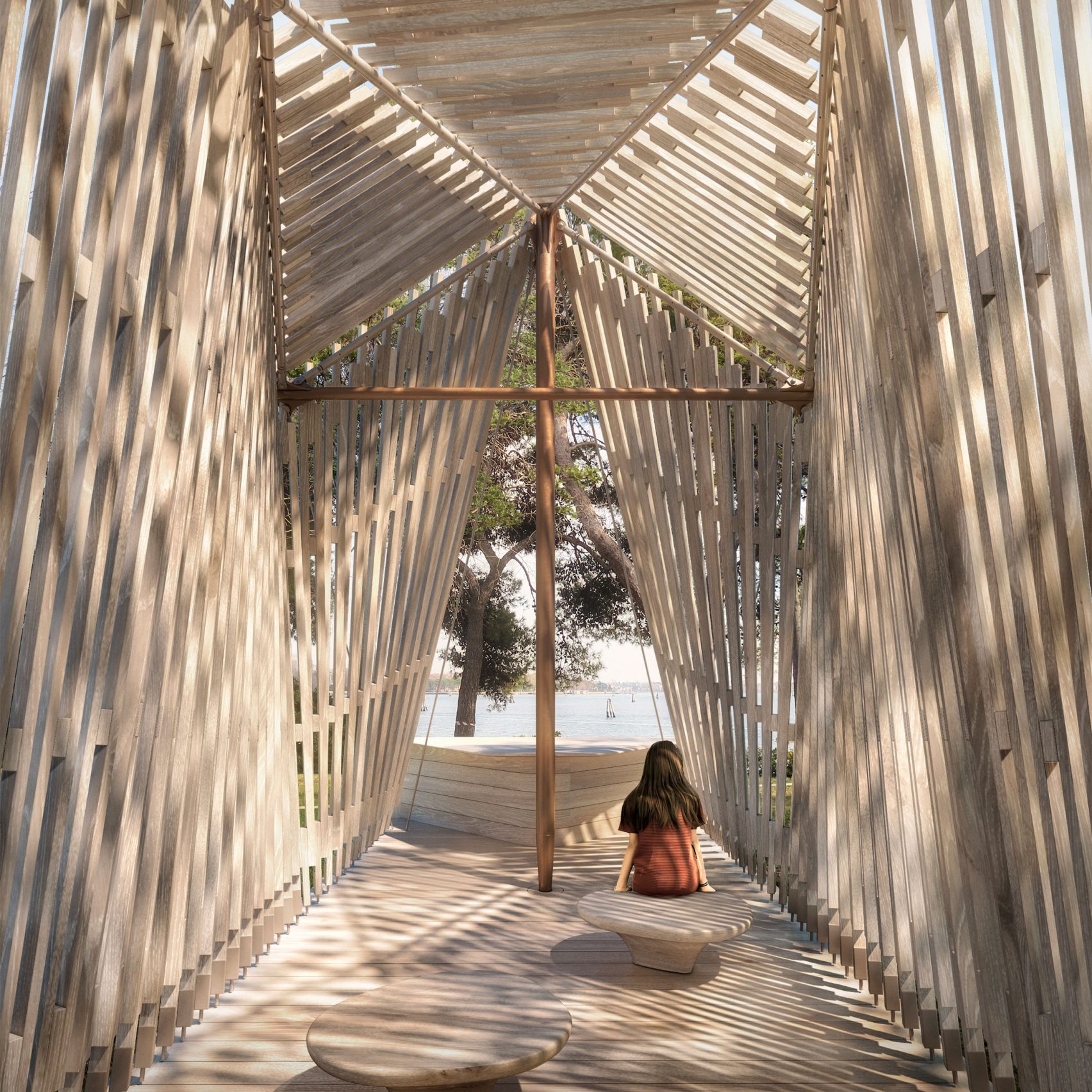
From Foster + Partners, this tent-like structure is made from wood and built around three symbolic crosses. This British design and engineering firm is known for it’s sustainable approach, as shown with this structure.
Image courtesy of: Dezeen
For this year’s Venice Biennale, there are six countries competing for the first time… the most surprising is Vatican City. The world’s most global architectural competition has never been the place for the “pinnacle of all churches” to showcase it’s chapels. However, this year was different!
Ten chapels designed by a dozen architects will be showcased this year, nestled on an island in the Venetian lagoon, San Giorgio Maggiore. Different from past displays, the pavilion called “Vatican Chapels” presents finished buildings rather than models and sketches.
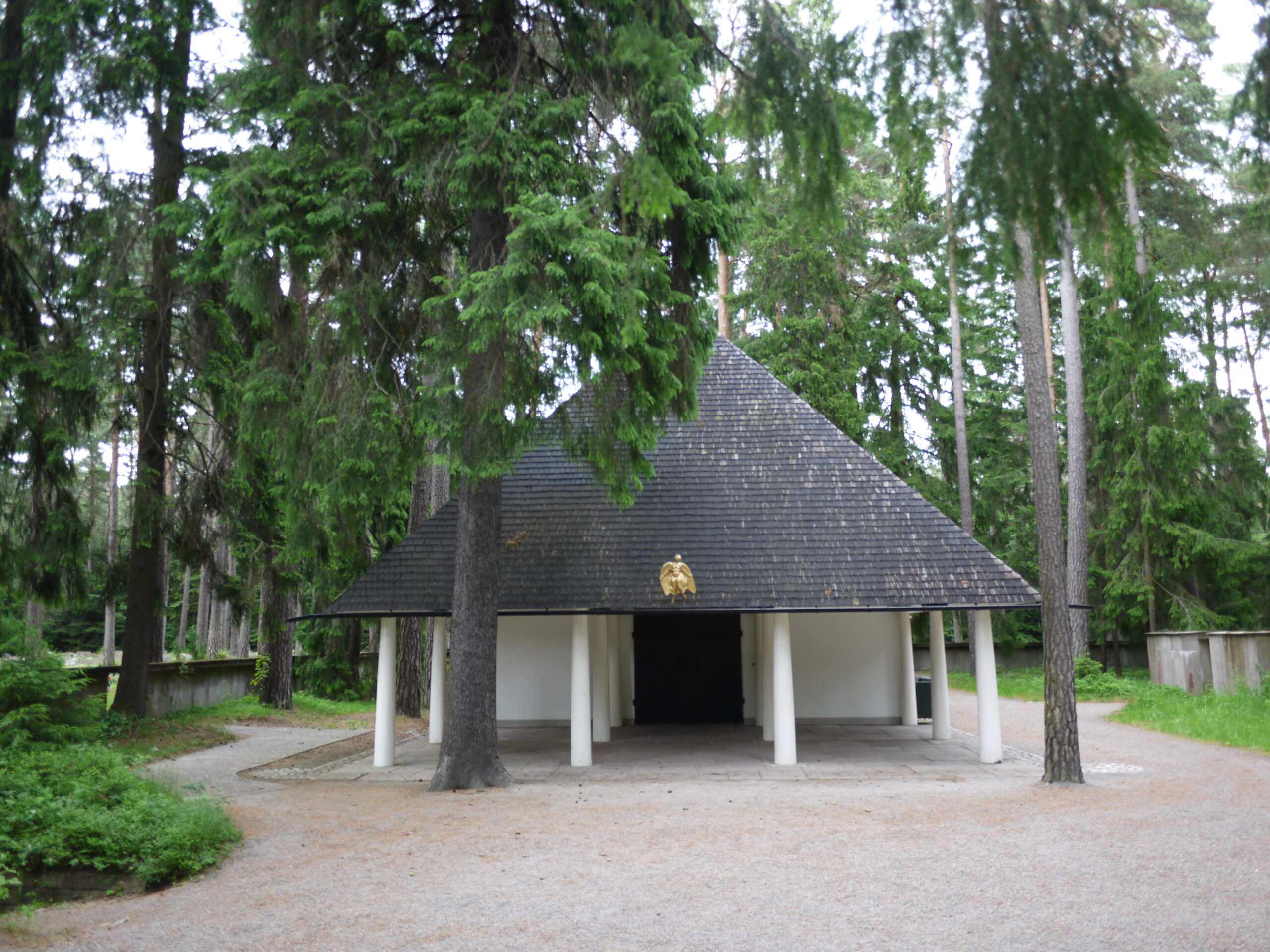
Constructed in Stockholm, the Woodland Chapel was built in 1918-1920.
Image courtesy of: Hartwright Architects
The chosen architects were asked to reinterpret the Woodland Chapel. This iconic, geometric building was designed by Erik Gunnar Asplund, the Swedish architect from the early 20th century. As you can imagine, the 10 architects each had their own distinct vision.
Initially, Asplund designed a stone chapel… but the material was too expensive and he was asked to rethink the original design. Luckily, Asplund had recently been to a wedding in Denmark and was inspired by the simple wooden chapels set among trees. Square from the outside, the inside is a circular dome from which indirect light floods in. The chapel has very little decoration; mainly, a womanly figure opening her arms to welcome visitors. Each and every detail was thoroughly investigated, each figure and symbol has true meaning!
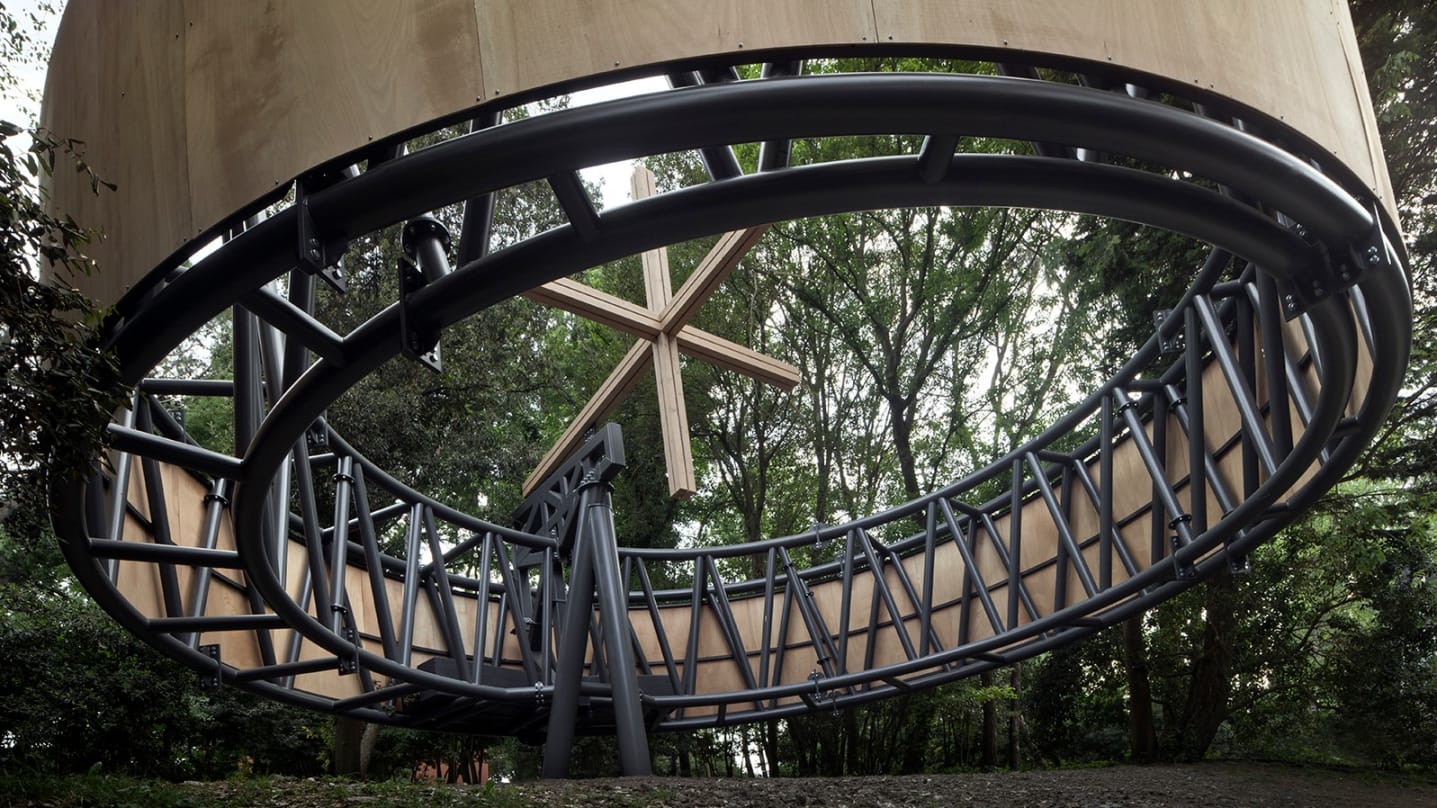
Javier Corvalá Espínola’s vision allows visitors to stand under and awe-inspiring steel ring tilted on a tripod. It’s the most physical of the chapels, and the largest by far!
Image courtesy of: CNN
Cardinal Gianfranco Ravasi, the Vatican’s de facto culture minister, had two parameters for the architects: the chapels need to contain a pulpit and an alter. Other than those simple instructions, the architects had free rein and religious affiliation wasn’t a factor and never discussed.
Francesco Dal Co was named the pavilion’s curator. Dal Co says that the architects were chosen based on their differing structural conceptions and materials. It’s important to note that among the ten chosen, there were two Pritzker Prize winners: Norman Foster and Eduardo Souto de Mouro.
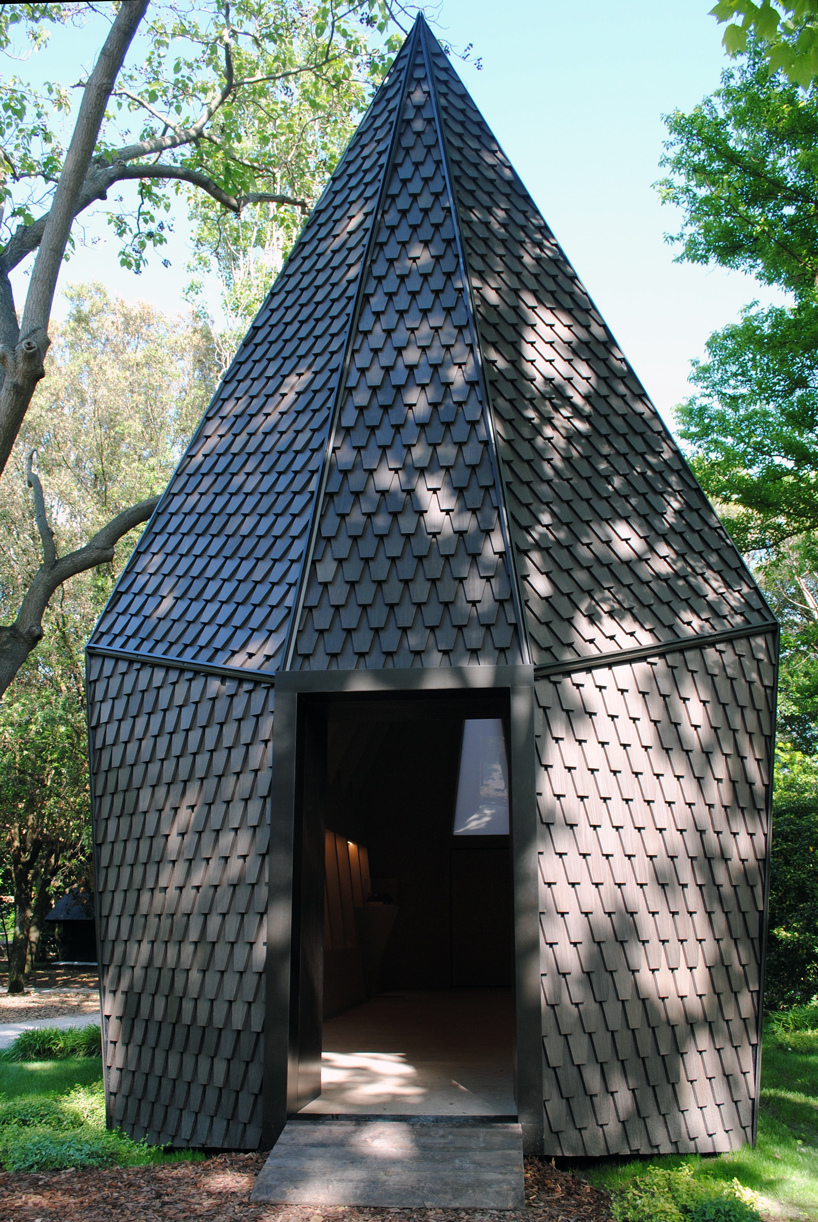
Francesco Magnani and Trudy Pelzel’s structure acts as a prelude to the exhibition and holds within it Asplund’s original sketches of the Woodland Chapel.
Image courtesy of: DesignBoom
The question remains… what will become of these chapels after the Biennale closes in November. It’s important to note that for nearly 70 years, the island of San Giorgio Maggiore has been home to the Giorgio Cini Foundation which is a non-profit organization devoted entirely to intellectual pursuits. Thus, this area on the foundation’s private grounds is rarely available to the general public.
There’s talk of the chapels saying “put” if permission is granted by the foundation. In May, Renata Condello, director of the foundation, said she’s be thrilled if the chapels remained on the island; “A great park of sculptures and religious architecture, would give us many themes to reflect on.”
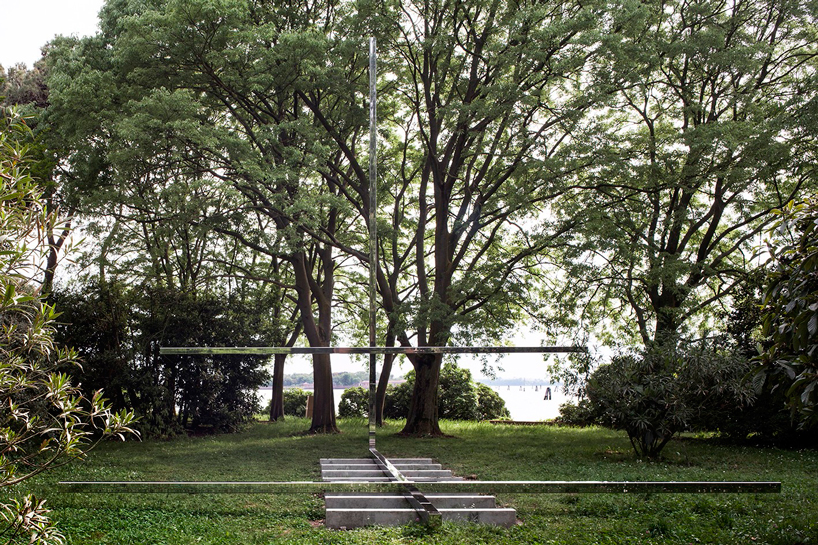
Brazilian architect, Carla Jucaba’s chapel is made from four steel beams 8 meters-long. Two beams make up a bench and the other two beams make up a cross resting on seven pieces of concrete. Reflected in the stainless steel are the beautiful and serene surroundings… it’s almost as though the chapel could disappear at any moment.
Image courtesy of: DesignBoom, photographed by: Alessandra Chemollo
Holy See pavilion allows us all, regardless of religion, a chance to marvel in the solitude and serenity provided by these Catholic structures. Hopefully, it’ll stay in place past November, enabling tourists a chance to meander around and form their own “peace”!